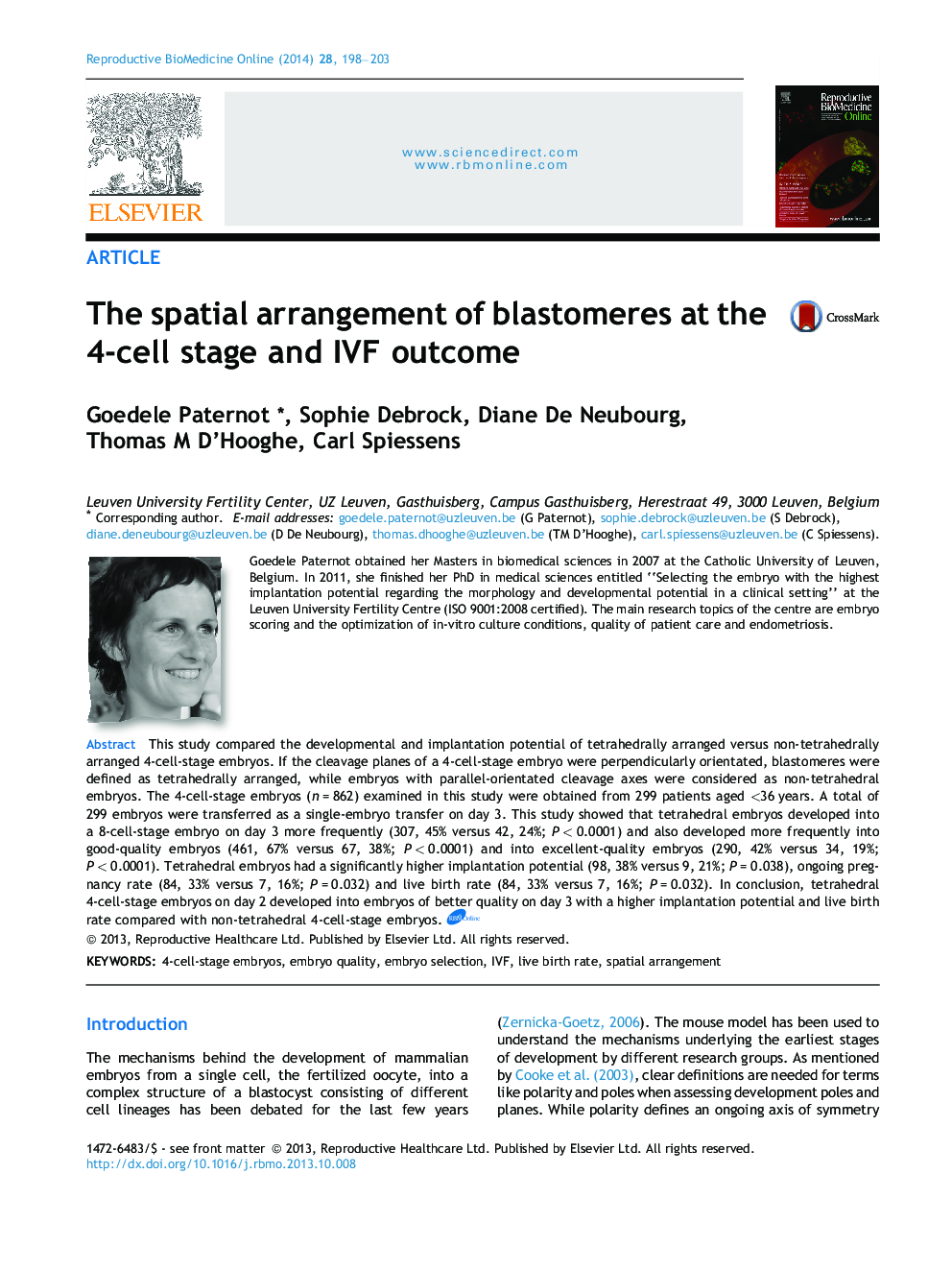| Article ID | Journal | Published Year | Pages | File Type |
|---|---|---|---|---|
| 3970284 | Reproductive BioMedicine Online | 2014 | 6 Pages |
This study compared the developmental and implantation potential of tetrahedrally arranged versus non-tetrahedrally arranged 4-cell-stage embryos. If the cleavage planes of a 4-cell-stage embryo were perpendicularly orientated, blastomeres were defined as tetrahedrally arranged, while embryos with parallel-orientated cleavage axes were considered as non-tetrahedral embryos. The 4-cell-stage embryos (n = 862) examined in this study were obtained from 299 patients aged <36 years. A total of 299 embryos were transferred as a single-embryo transfer on day 3. This study showed that tetrahedral embryos developed into a 8-cell-stage embryo on day 3 more frequently (307, 45% versus 42, 24%; P < 0.0001) and also developed more frequently into good-quality embryos (461, 67% versus 67, 38%; P < 0.0001) and into excellent-quality embryos (290, 42% versus 34, 19%; P < 0.0001). Tetrahedral embryos had a significantly higher implantation potential (98, 38% versus 9, 21%; P = 0.038), ongoing pregnancy rate (84, 33% versus 7, 16%; P = 0.032) and live birth rate (84, 33% versus 7, 16%; P = 0.032). In conclusion, tetrahedral 4-cell-stage embryos on day 2 developed into embryos of better quality on day 3 with a higher implantation potential and live birth rate compared with non-tetrahedral 4-cell-stage embryos.In this study, an additional characteristic of 4-cell-stage embryos has been evaluated. The aim of the study was to evaluate the spatial arrangement of blastomeres in a 4-cell-stage embryo. If the cleavage planes of a 4-cell-stage embryo were perpendicularly orientated (indicating that both axes meet a right angle), blastomeres were defined as tetrahedral arranged while the other embryos were considered as non-tetrahedral embryos. The 4-cell-stage embryos (n = 862) examined in this study were obtained from 299 patients aged <36 years. A total of 299 embryos were transferred as a single-embryo transfer on day 3. This study showed that tetrahedral embryos developed into an 8-cell-stage embryo on day 3 more frequently (307, 45% versus 42, 24%; P < 0.0001) and also developed more frequently into good-quality embryos (461, 67% versus 67, 38%; P < 0.0001) and excellent-quality embryos (290, 42% versus 34, 19%; P < 0.0001). Tetrahedral embryos had a significantly higher implantation potential (98, 38% versus 9, 21%; P = 0.038), ongoing pregnancy rate (84, 33% versus 7, 16%; P = 0.032) and live birth rate (84, 33% versus 7, 16%; P = 0.032). In conclusion, tetrahedral 4-cell-stage embryos on day 2 developed into embryos of better quality on day 3 with a higher implantation potential and live birth rate compared with non-tetrahedral 4-cell-stage embryos.
